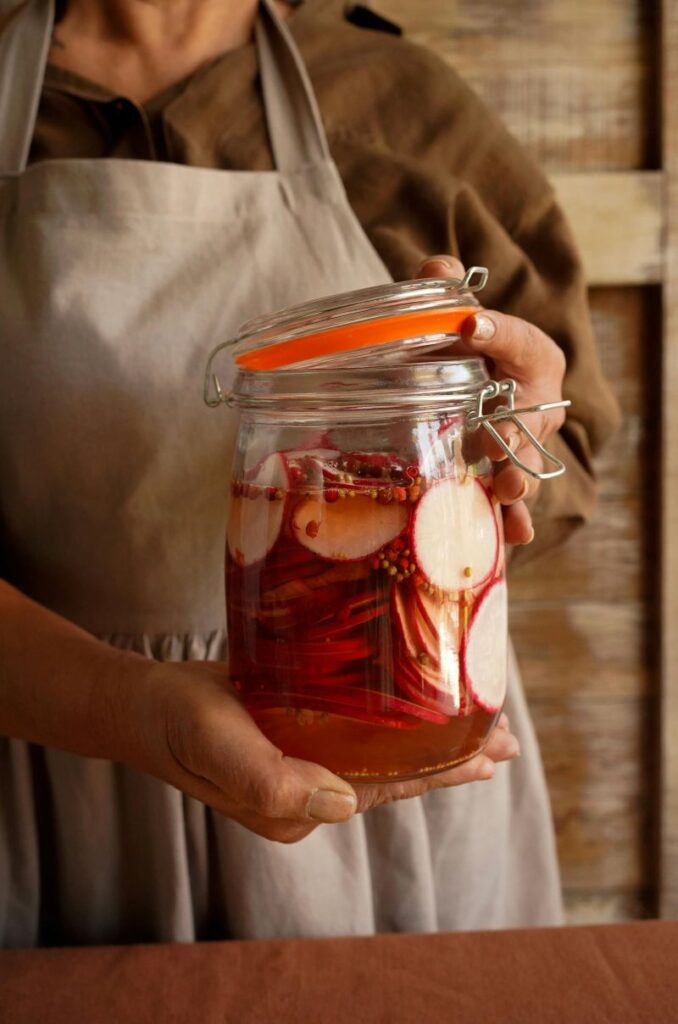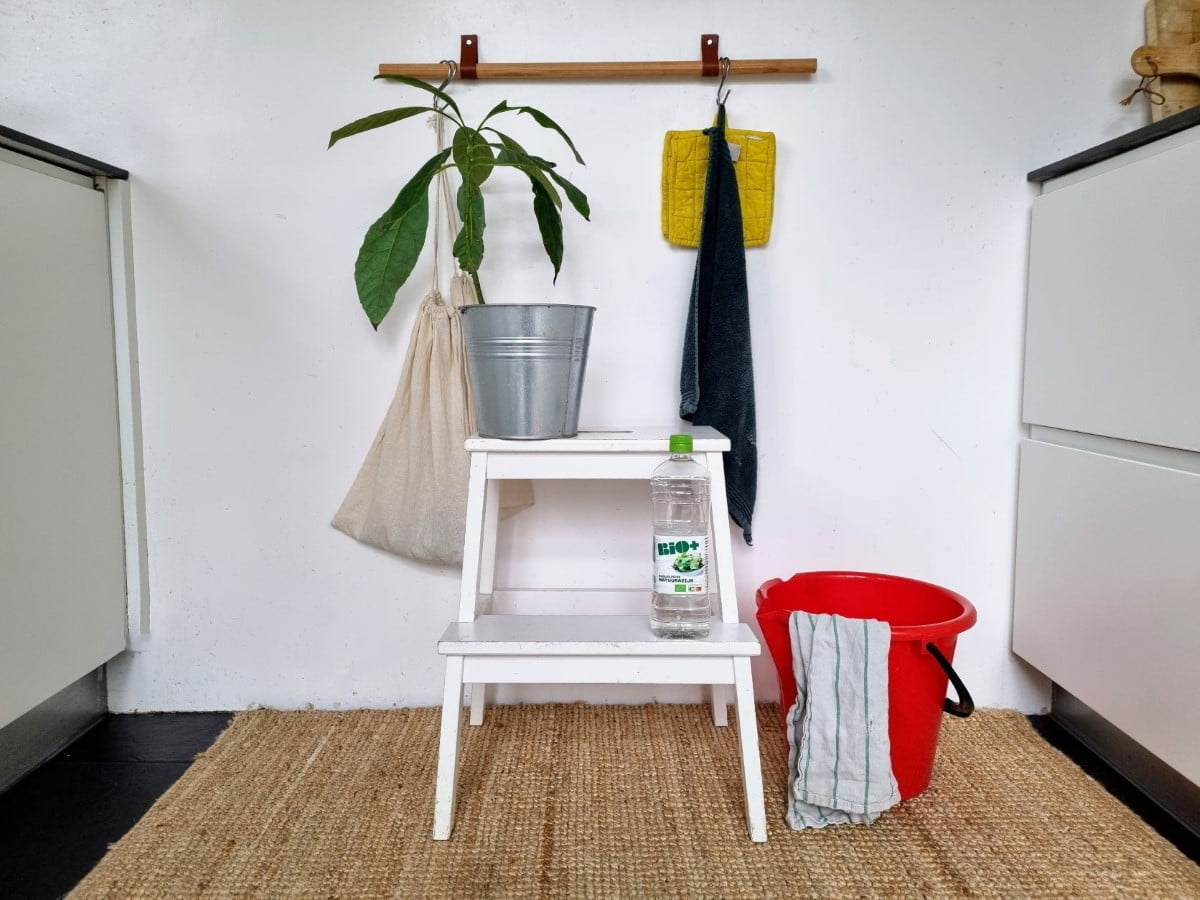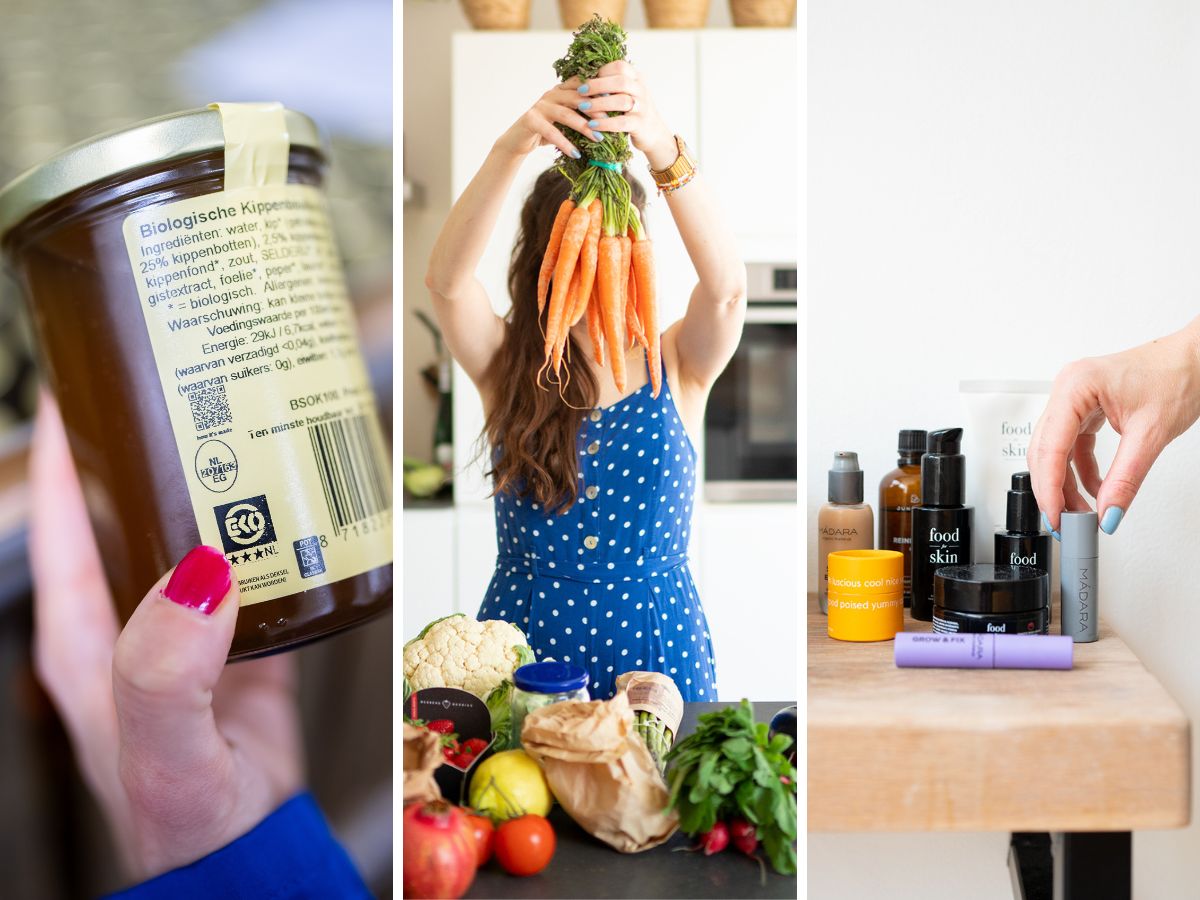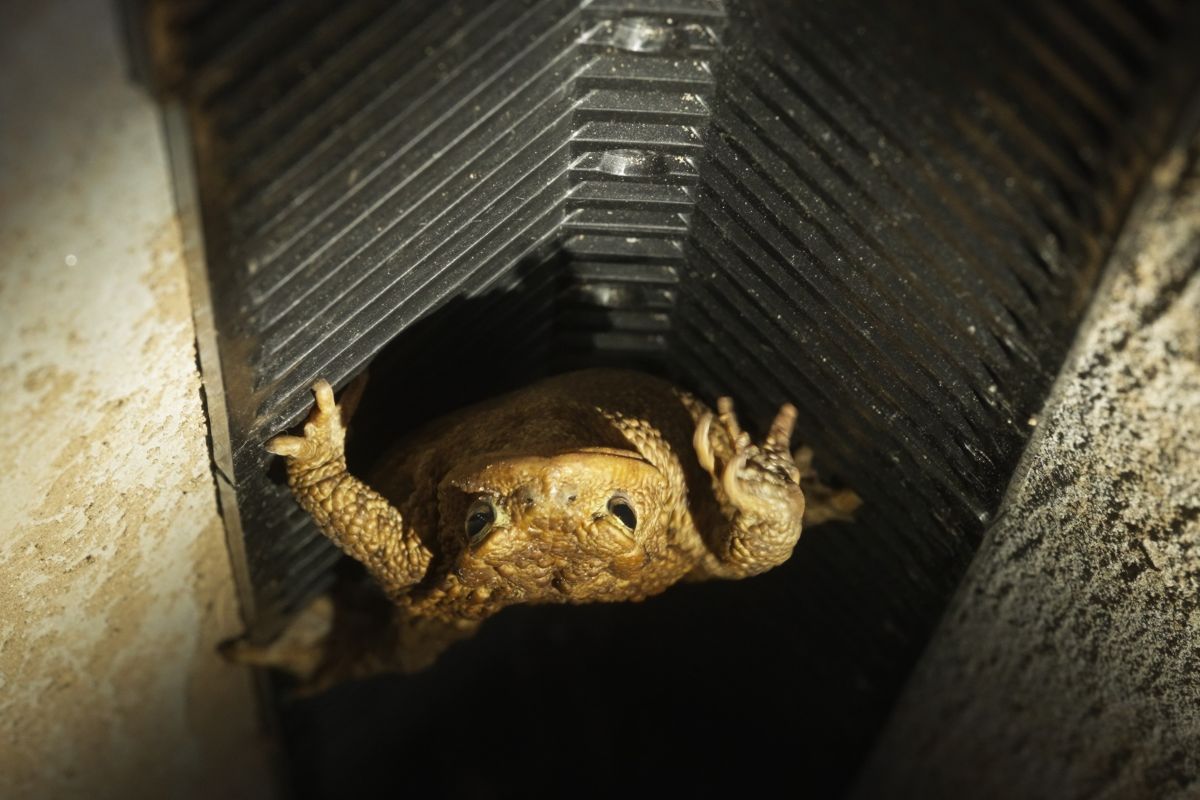Not only can you use soda vinegar to make a delicious salad dressing, it is also a perfect cleaning agent for all sorts of things. You can use it to clean the kitchen, it is the perfect fabric softener for your washing machine, you can polish mirrors and windows and much more. It can even (undiluted) tackle a dirty toilet bowl. In short, natural vinegar is an all-rounder when it comes to cleaning, and it is environmentally friendly. So time to pay tribute to this fantastic remedy and share the best cleaning tips with soda vinegar.
Ode to natural vinegar
These days, for every cleaning job, appliance or surface, you can find a special ‘handy’ product that promises to do the job even better, faster and shinier. With all these different products, your cleaning cupboards are in danger of overflowing, they are anything but environmentally friendly and you often don't need them at all. My conclusion: the best remedies our grandparents used were green soap, citric acid, natural vinegar and baking soda. These true all-rounders in the household are environmentally friendly, effective and dirt cheap. You can say that about few other remedies.
In this article, I take a closer look at natural vinegar and tell you why I am so enthusiastic about this cleaning product. Ever since I discovered soda vinegar, I have been able to tackle almost every cleaning job around the house. I'm surprised every time how often natural vinegar is the solution to a stubborn cleaning job. I can no longer do without my trusty transparent bottle of organic soda vinegar that costs me less than one euro. What is the secret anyway?
What is natural vinegar made of?
Isn't it extraordinary that something you can use to prepare tasty meals is also a damn handy cleaning agent. That soda vinegar is a wonder drug is nothing new. I just mentioned that our grandparents already used it, but actually it goes back much further. Already in the Middle Ages, people used vinegar in food, for making food last longer and also as a medicine. Vinegar is so old that it is even described in the Bible. But what is it really? Vinegar is created when fermented products, which are alcoholic drinks such as wine, beer or fermented fruit juice, are acidified by the right bacteria.
You will probably have noticed at the shop that you have all kinds of vinegar: wine, rice, balsamic or apple vinegar and many more. Vinegar is so easy to make, you could even make it at home. All you need is a weck jar and some patience. To speed up the process a bit, vinegar producers often use a tool, a bacterium that speeds up the fermentation process.

Vinegar in the kitchen to ferment.
Natural vinegar versus cleaning vinegar
On the supermarket shelf, you will also find cleaning vinegar. So isn't it the same thing? No! This type of vinegar is made in the chemical industry from (m)ethanol, which is a synthetic process. This vinegar is much more acidic and therefore not meant for consumption, but it can be used as a cleaning agent. It is also certainly very effective and cheap, but a lot less mild.
Eco-friendly cleaning with natural vinegar: cleaning tips!
Especially with the mild edible natural vinegar, also known as table vinegar, you can do an awful lot when cleaning. Vinegar descales, degreases, kills bacteria, repels odours and is thus environmentally friendly. With these special properties, you can imagine why natural vinegar is such a great cleaning agent. You don't have to worry about vinegar smell either, because the acidic agent doesn't smell when it's dried up.
Careful with vinegar in nature, unless you want to fight pests
Vinegar is an acidic solution. When insects come into contact with this kind of acidic culture, they will die immediately. So yes, soda vinegar is also a definite tip if you want to control pests like fruit flies and ants, but caution is also needed when disposing of your cleaning mixture. Like other cleaning products, always dispose of soda vinegar safely in the sink or toilet and not in nature.
Since vinegar has a low pH, you should also be careful with hardwood surfaces and rocks, which is not a good combination.
Source: pest-control.com
Removing limescale deposits in the bathroom
Nothing is more irritating than limescale. It's so hard to get rid of. Try natural vinegar! Fill a bucket with equal parts water and vinegar and apply it to the limescale. Let it soak for a few hours, then rinse with water et voilà your bathroom shines again! Do you have a shower head with stubborn limescale? Then leave the entire shower head in the bucket with the mixture for several hours (and repeat several times if necessary until it's gone).
Are you suffering from mould in the bathroom? You are then quickly tempted to immediately reach for an effective mould remover. But pooh, that's pretty strong chemical stuff. Fungi are not crazy about acid either, which is why a plant spray with natural vinegar can also be very effective for incipient mould spots.
Natural vinegar for all limescale
Since soda vinegar works well against limescale, you can also use it perfectly to clean and thus descale other limescale such as in the tea kettle, iron and coffee maker!
Cleaning caked pans
Bring a frying pan to the boil with one part water and one part baking soda vinegar and let it boil for five to 10 minutes. Remove the pan from the heat, rinse it and then gently scrub the pan clean with a soft sponge and baking soda. We got even the pans with the most stubborn dirt clean with this. Watch the short video to see the roadmap here.


These ceramic non-stick pans were so dirty, we couldn't get it clean. So until we tried sodium vinegar and baking soda. You can read more about our search for sustainable pans here.
Clean windows, but environmentally friendly
Products used to clean windows and mirrors usually also contain volatile organic compounds. These substances are known to contribute to 5 to 10% of smog formation in the Netherlands. You can often smell it or feel it on your eyes as soon as you use such a detergent. Fortunately, you often don't need such a fierce detergent at all, because for cleaning windows and mirrors too, naturic vinegar is your powerhouse. Make a mixture of one part soda vinegar and three parts water and wipe the windows clean with a sponge. Then rinse with water and wipe dry with a clean cloth.
Mastering dirty kitchen
Natural vinegar is also a perfect all-purpose cleaner. Make a mixture of equal parts water and natural vinegar, add some lemon juice or a few drops of essential oil if you like, and you have the perfect all-purpose cleaner for cleaning your kitchen sink, gas hob, oven, microwave, kitchen cupboards and fridge. Wipe everything down with a dry clean cloth and the kitchen is shiny clean again. Tip: Do you have a clogged sink? Then try a mixture of natural vinegar (one cup) and baking soda (one tablespoon)!
Also see: cleaning tips with baking soda and cleaning tips with citric acid (another such environmentally friendly toppers!).
Extra microwave cleaning tip
Put a bowl of vinegar in the microwave, heat it on full power for a few minutes. This makes it easier to clean the microwave and foul odours are gone.
Source: smarthousehold.nl
As fabric softener and washing machine cleaner
If you want to do laundry in a more eco-friendly way, you'll want to wash at the lowest possible temperature. If you're not careful, bad smells are lurking and of course you don't want that because they can also start to seep into your clean clothes. The solution is to wash towels weekly at 60°C (this will kill bacteria), but what also helps a lot is to use natural vinegar as fabric softener. This kills two birds with one stone: fabric softener is not environmentally friendly, while naturel vinegar has the same softening effect, combats bad odours and, unlike fabric softener, does not harm the environment. In addition, it decalcifies and kills bacteria and thus also combats bad odours in the washing machine, which are usually also caused by bacteria. Is the washing machine very dirty? Pour a cup of vinegar into the washing machine and run an empty wash on the hottest setting to remove dirt and odours from the machine.
Also see: all about washing machines and detergents and eco-friendly cleaning of your washing machine with natural vinegar.
Tackling a dirty toilet bowl
For a dirty toilet bowl, you also have a lot of fierce cleaners on the market. Most people are quick to reach for chlorine or toilet duck, but you can also do this job in a more environmentally friendly way with, yes, vinegar. In this case, though, you have to come up with some big guns: pour undiluted soda vinegar into the pot to soak for several hours. Then rinse with water and repeat if necessary if it is really stubborn.
Natural vinegar as detergent
If you can get a dirty toilet bowl clean with it, it should be able to make plates and cutlery shine too. And it does. Natural vinegar is also a great eco-friendly alternative to washing-up liquid. This is because vinegar, like citrus, has the property of dissolving grease easily. And that, of course, is exactly what you want when you're washing dishes. Use about one part vinegar and three parts water for this. Speaking of washing dishes, if you have a dishwasher, then natural vinegar is also a cheap and much more eco-friendly alternative to rinse aid. Give it a try!
According to cleaning guru Marja Middeldrop you can also make your cutlery shine again by putting them in a mixture of soda vinegar and water and then polishing them well.
It's a miracle, it's natural vinegar
If you read this list like this, it won't surprise you that I am so enthusiastic about soda vinegar in my household. Natural vinegar is cheap, long-lasting, safe around children and pets, it is natural and eco-friendly, non-toxic (even edible) and vegan. In short, it is a versatile product. Do you have another great tip using natural vinegar? Be sure to let us know! You can get in touch with the editors via the follow and contact buttons at the bottom of this page.
More sustainable tips from thegreenlist.nl
- Also see: DIY recipe to make your own hand soap.
- Also see: DIY recipe to make your own laundry detergent.
- Also see: DIY recipe to make your own abrasive.
Source: Willem Weaver, Outdoor Living. Photo credits: hello aesthe (Pexels) and thegreenlist.nl.












